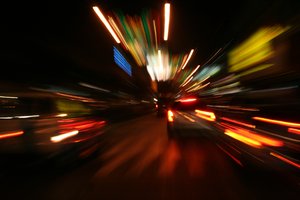The truth is black and white. Accident risks are higher during the evening hours than during the daytime. According to Science Daily, most streets in the United States don’t have roadway lighting, which only worsens the problem.

Despite these concerns, the proportion of nighttime driving is not likely to go down in today’s around-the-clock economy, making car headlights increasingly important to nighttime driving safety.
Our Naples car accident lawyers understand that Daylight Saving Time is schedules to end on November 3rd, meaning that we’ll be moving our clocks back an hour and it’s going to get darker sooner. Much like drunken drivers plague our roads, drowsy drivers could be deadly during the year’s daylight savings commute. Compared to the jet lag-like feeling that comes with turning the clocks forward in the spring, this weekend’s extra hour of sleep felt like a gift — one that many of the 43 percent of Americans who say they rarely or never get a good night’s sleep couldn’t wait to receive. The extra hour of sleep may not be enough to lessen the effects on our car accident risks though.
The United States started observing DST time during World War I as a way to preserve energy. Even though the change brings more hours of sunlight during the warmer months, daylight savings is not always welcomed. The online petition End Daylight Saving Time, argues that the change is more burden than it’s worth.
It has become increasingly clear that insufficient sleep and disrupted circadian rhythms are a major public health problem. For instance, in 1988 the cost of sleep-related accidents exceeded $56 billion and included 24,318 deaths and 2,474,430 disabling injuries.
There are numerous studies showing the adverse health effects of sleep deprivation. But the studies involving one-hour time changes point to just how sensitive your body is to seemingly insignificant changes in your diurnal rhythms.
Not only are we faced with the risks associated with nighttime driving, but we’re also faced with the risks of drowsy driving. The truth of the matter is that these scenarios cause thousands of traffic accidents each and every year.
According to AAA, you should follow these safety tips to help to reduce your risks of an accident during this time of the year:
-Prepare for nighttime driving by checking on your vehicle’s exterior lighting.
-Aim your headlights properly.
-Avoid drinking and driving.
-Reduce your speed and increase your following distances. It’s more difficult to judge other vehicle’s speeds and distances at night.
-Make sure to remove sunglasses at dusk – drivers often forget they are wearing them.
-If you feel too tired to drive, pull over and take a rest. Avoid pushing through. That’s the worst move you could make.
-Get to bed at a reasonable hour. Hold on strong to your sleep schedule through the time change.
Drowsiness, a condition most drivers fail to recognize, can be as dangerous as drinking and driving,” he adds. “Studies show 60 percent of us have driven while feeling sleepy, and more than a third admit to having fallen asleep at the wheel in the past year.”
Call today if you or someone you love has been injured in an auto accident. We offer free and confidential consultation to discuss victim’s rights. Call 1-800-283-2900.
More Blog Entries:
New Testing Evaluating Front-to-Rear Accident Avoidance, Florida Injury Lawyer Blog, October 18, 2013
Officials Continue Education Campaign: Text Messaging and Driving Illegal in Florida, Florida Injury Lawyer Blog, October 7, 2013
 Florida Injury Lawyer Blog
Florida Injury Lawyer Blog





